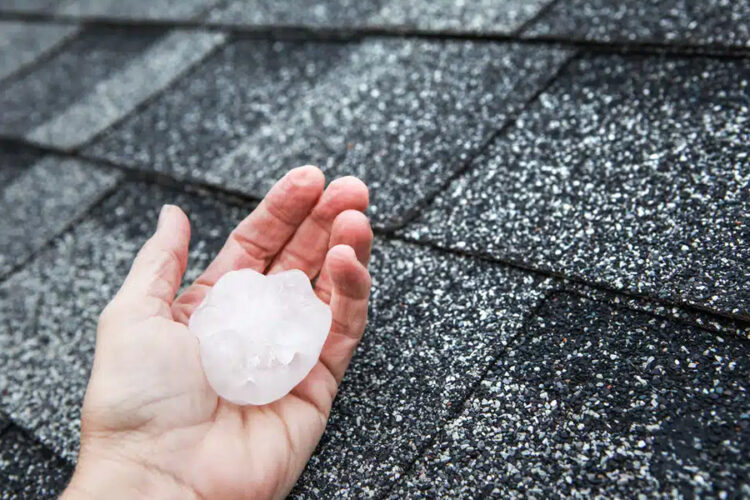Hail storms can cause significant damage to homes, vehicles, and outdoor structures, leaving property owners in urgent need of repairs. From roof damage to broken windows, the aftermath of a hail storm can be overwhelming. Proper hail storm restoration is crucial to protect your property from further damage and ensure safety. This guide covers essential steps for restoring your property after a hail storm, from assessing damage to working with insurance companies and choosing the right contractor.
1. Assess the Damage Immediately
After a hail storm, the first step is to carefully inspect your property for visible damage. Common areas to check include:
Roof:
Look for missing, cracked, or dented shingles. Hail can cause bruises on shingles, which may not be immediately visible but can lead to leaks over time.
Windows and Doors:
Inspect glass for cracks or breakage, and check window frames and doors for dents.
Siding and Gutters:
Hail can dent or crack siding and cause gutters to bend, detach, or clog with debris.
Outdoor Structures:
Check fences, decks, and sheds for damage, as well as any outdoor furniture or equipment.
If the damage is extensive or not easily visible, consider hiring a professional inspector to assess the full extent of the damage.
2. Document the Damage for Insurance Claims
Documenting damage is a critical part of the restoration process, especially if you plan to file an insurance claim. Take clear photos and videos of all affected areas, noting the date and details of the damage. Keep records of any temporary repairs you make, such as tarping a roof or boarding up windows, as these costs can often be reimbursed by your insurance company.
3. Contact Your Insurance Company
Once you have documented the damage, contact your insurance company to report the loss and begin the claims process. An insurance adjuster will likely need to visit your property to assess the damage and estimate the cost of repairs. Be prepared to provide all documentation and evidence of the damage to support your claim.
4. Choose the Right Hail Storm Restoration Contractor
Selecting the right contractor is crucial for effective hail storm restoration. Look for a contractor who specializes in storm damage repairs and has experience working with insurance companies. Key considerations when choosing a contractor include:
Licensing and Insurance:
Ensure the contractor is licensed, insured, and bonded. This protects you in case of accidents or additional damage during repairs.
Reputation and Reviews:
Check online reviews and ask for references from previous clients. A reputable contractor should have positive feedback and a history of quality work.
Detailed Estimates:
Request detailed written estimates from multiple contractors. Compare not only the costs but also the scope of work and materials to be used.
Warranty and Guarantee:
A reliable contractor will offer warranties on materials and workmanship, giving you peace of mind that your repairs will be done correctly.
5. Perform Necessary Repairs
Once you’ve selected a contractor, it’s time to move forward with the necessary repairs. Common hail storm restoration tasks include:
Roof Repair or Replacement:
Depending on the extent of damage, this may involve replacing shingles, repairing leaks, or in severe cases, a full roof replacement.
Window and Siding Repairs:
Replacing broken glass, fixing dented siding, and ensuring all exterior elements are sealed properly to prevent water intrusion.
Gutter and Downspout Fixes:
Repairing or replacing gutters to ensure proper drainage and prevent water damage to your foundation.
6. Prevent Future Hail Damage
To protect your property from future hail storms, consider taking preventive measures such as installing impact-resistant roofing materials, using storm shutters on windows, and reinforcing vulnerable areas with stronger, hail-resistant products. Regular maintenance, such as cleaning gutters and inspecting your roof, can also minimize the risk of severe damage in the future.
Conclusion
Hail storm restoration is a critical process that requires prompt action, careful documentation, and the right contractor to restore your property efficiently. By assessing the damage, working with your insurance company, and selecting experienced professionals, you can repair your property and protect it from further harm. Proper restoration not only restores your home’s appearance but also ensures its safety and value for years to come.

